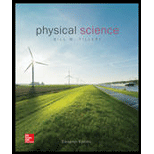
Physical Science
11th Edition
ISBN: 9780077862626
Author: Bill Tillery, Stephanie J. Slater, Timothy F. Slater
Publisher: McGraw-Hill Education
expand_more
expand_more
format_list_bulleted
Textbook Question
Chapter 7, Problem 29AC
Which of the following can only be explained by a wave model of light?
a. Reflection
b. Refraction
c. Interference
d.
Expert Solution & Answer
Want to see the full answer?
Check out a sample textbook solution
Chapter 7 Solutions
Physical Science
Ch. 7 - 1. Which of the following is luminous?
a. Moon
b....Ch. 7 - Prob. 2ACCh. 7 - Prob. 3ACCh. 7 - Prob. 4ACCh. 7 - 5. Light interacts with matter by which...Ch. 7 - Prob. 6ACCh. 7 - 7. Light is said to travel in straight-line paths,...Ch. 7 - 8. The image you see in a mirror is
a. a real...Ch. 7 - Prob. 9ACCh. 7 - Prob. 10AC
Ch. 7 - Prob. 11ACCh. 7 - 12. The component colors of sunlight were first...Ch. 7 - 13. The color order of longer-wavelength to...Ch. 7 - Prob. 14ACCh. 7 - 15. Polarization of light is best explained by...Ch. 7 - 16. Light in one plane is transmitted and light in...Ch. 7 - Prob. 17ACCh. 7 - Prob. 18ACCh. 7 - Prob. 19ACCh. 7 - Prob. 20ACCh. 7 - 21. Fiber optics transmits information using
a....Ch. 7 - 22. A luminous object
a. reflects a dim blue-green...Ch. 7 - Prob. 23ACCh. 7 - 24. The difference in the light emitted from a...Ch. 7 - Prob. 25ACCh. 7 - 26. An image that is not produced by light rays...Ch. 7 - Prob. 27ACCh. 7 - Prob. 28ACCh. 7 - 29. Which of the following can only be explained...Ch. 7 - 30. The polarization behavior of light is best...Ch. 7 - Prob. 31ACCh. 7 - Prob. 32ACCh. 7 - Prob. 33ACCh. 7 - Prob. 34ACCh. 7 - 35. The electromagnetic wave model defines an...Ch. 7 - 36. Of the following, the electromagnetic wave...Ch. 7 - 37. Of the following, the electromagnetic wave...Ch. 7 - Prob. 38ACCh. 7 - 39. Green grass absorbs
a. yellow light.
b. only...Ch. 7 - Prob. 40ACCh. 7 - Prob. 41ACCh. 7 - Prob. 42ACCh. 7 - Prob. 43ACCh. 7 - Prob. 44ACCh. 7 - 45. Polaroid sunglasses work best in eliminating...Ch. 7 - 46. The condition of farsightedness, or hyperopia,...Ch. 7 - Prob. 47ACCh. 7 - Prob. 48ACCh. 7 - 49. The special theory of relativity is
a. a new...Ch. 7 - Prob. 50ACCh. 7 - 51. Comparing measurements made on the ground to...Ch. 7 - 1. What determines if an electromagnetic wave...Ch. 7 - 2. What model of light does the polarization of...Ch. 7 - Prob. 3QFTCh. 7 - 4. What model of light is supported by the...Ch. 7 - Prob. 5QFTCh. 7 - Prob. 6QFTCh. 7 - 7. When does total internal reflection occur? Why...Ch. 7 - 8. Why does a highway sometimes appear wet on a...Ch. 7 - 9. How can you tell if a pair of sunglasses is...Ch. 7 - 10. What conditions are necessary for two light...Ch. 7 - 11. Explain why the intensity of reflected light...Ch. 7 - Prob. 12QFTCh. 7 - Prob. 13QFTCh. 7 - Prob. 14QFTCh. 7 - 1. Clarify the distinction between light...Ch. 7 - 2. Describe how you would use questions alone to...Ch. 7 - 3. Use a dialogue as you “think aloud."...Ch. 7 - 4. Compare and contrast the path of light through...Ch. 7 - 5. Analyze how the equation E = hf could mean that...Ch. 7 - 6. How are visible light and a radio wave...Ch. 7 - Prob. 1PEBCh. 7 - Prob. 2PEBCh. 7 - 3. How many minutes are required for a radio...Ch. 7 - 4. An incident light ray strikes a mirror with an...Ch. 7 - 5. The speed of light through a transparent...Ch. 7 - Prob. 6PEBCh. 7 - Prob. 7PEBCh. 7 - 8. The wavelength of light from a monochromatic...Ch. 7 - Prob. 9PEBCh. 7 - 10. At what rate must electrons in a wire vibrate...Ch. 7 - Prob. 11PEBCh. 7 - Prob. 12PEBCh. 7 - Prob. 13PEBCh. 7 - Prob. 14PEBCh. 7 - Prob. 15PEB
Knowledge Booster
Learn more about
Need a deep-dive on the concept behind this application? Look no further. Learn more about this topic, physics and related others by exploring similar questions and additional content below.Similar questions
- Explain why light is referred to as electromagnetic radiation.arrow_forwardDiffusion by reflection from a rough surface is described in this chapter. Light can also be diffused by refraction. Describe how this occurs in a specific situation, such as light interacting with crushed ice.arrow_forwardYour friend says mat more patterns and colors can be seen on the wings of birds if viewed in ultraviolet light. Would you agree with your friend? Explain your answer.arrow_forward
arrow_back_ios
arrow_forward_ios
Recommended textbooks for you
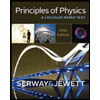 Principles of Physics: A Calculus-Based TextPhysicsISBN:9781133104261Author:Raymond A. Serway, John W. JewettPublisher:Cengage Learning
Principles of Physics: A Calculus-Based TextPhysicsISBN:9781133104261Author:Raymond A. Serway, John W. JewettPublisher:Cengage Learning Physics for Scientists and Engineers, Technology ...PhysicsISBN:9781305116399Author:Raymond A. Serway, John W. JewettPublisher:Cengage Learning
Physics for Scientists and Engineers, Technology ...PhysicsISBN:9781305116399Author:Raymond A. Serway, John W. JewettPublisher:Cengage Learning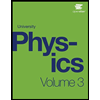 University Physics Volume 3PhysicsISBN:9781938168185Author:William Moebs, Jeff SannyPublisher:OpenStax
University Physics Volume 3PhysicsISBN:9781938168185Author:William Moebs, Jeff SannyPublisher:OpenStax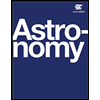 AstronomyPhysicsISBN:9781938168284Author:Andrew Fraknoi; David Morrison; Sidney C. WolffPublisher:OpenStax
AstronomyPhysicsISBN:9781938168284Author:Andrew Fraknoi; David Morrison; Sidney C. WolffPublisher:OpenStax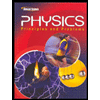 Glencoe Physics: Principles and Problems, Student...PhysicsISBN:9780078807213Author:Paul W. ZitzewitzPublisher:Glencoe/McGraw-Hill
Glencoe Physics: Principles and Problems, Student...PhysicsISBN:9780078807213Author:Paul W. ZitzewitzPublisher:Glencoe/McGraw-Hill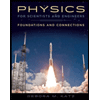 Physics for Scientists and Engineers: Foundations...PhysicsISBN:9781133939146Author:Katz, Debora M.Publisher:Cengage Learning
Physics for Scientists and Engineers: Foundations...PhysicsISBN:9781133939146Author:Katz, Debora M.Publisher:Cengage Learning

Principles of Physics: A Calculus-Based Text
Physics
ISBN:9781133104261
Author:Raymond A. Serway, John W. Jewett
Publisher:Cengage Learning

Physics for Scientists and Engineers, Technology ...
Physics
ISBN:9781305116399
Author:Raymond A. Serway, John W. Jewett
Publisher:Cengage Learning

University Physics Volume 3
Physics
ISBN:9781938168185
Author:William Moebs, Jeff Sanny
Publisher:OpenStax

Astronomy
Physics
ISBN:9781938168284
Author:Andrew Fraknoi; David Morrison; Sidney C. Wolff
Publisher:OpenStax

Glencoe Physics: Principles and Problems, Student...
Physics
ISBN:9780078807213
Author:Paul W. Zitzewitz
Publisher:Glencoe/McGraw-Hill

Physics for Scientists and Engineers: Foundations...
Physics
ISBN:9781133939146
Author:Katz, Debora M.
Publisher:Cengage Learning
Time Dilation - Einstein's Theory Of Relativity Explained!; Author: Science ABC;https://www.youtube.com/watch?v=yuD34tEpRFw;License: Standard YouTube License, CC-BY